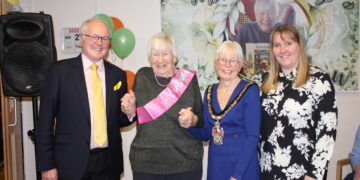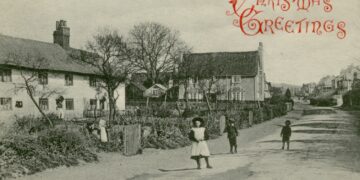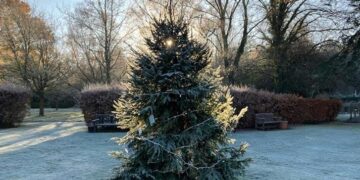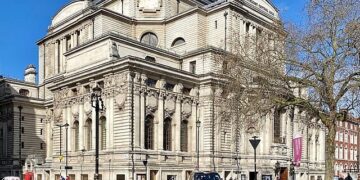The youngest members of a country family are learning the traditional skills of hedgelaying, passed down by two generations.
The centuries-old skill ticks all the right boxes for the 21st century battle to improve biodiversity, encouraging our wildlife to thrive.
Laid hedges are specially cut to make them thicker and healthier, providing creatures better refuge from cold, wind and predators. They also provide more food, like berries and seeds.
The Girdler family of Hurst has a big project under way to lay hedges at Stanlake Park Wine Estate on the Twyford/Hurst boundary.

Their work has special meaning. Richard Girdler, 67, was born on the estate where his father Percy was one of five gardeners. “It’s nice to be back here doing this work, it’s all come full circle,” he said.
The trunk of a 100 year old vine, which Percy tended, is a feature of Stanlake’s shop and wine bar. Workers at the estate used to call a walled area there ‘Percy’s Acre’.
Richard, taught by his dad, is now teaching his son James, 30, who went to St Nicholas Primary, Hurst and The Forest School, Winnersh, and James’s girlfriend, Amy Walduck who is based in Norfolk.

“We’re absorbing as much knowledge from Dad as we can, so we can take over the reins going forward. It’s passing the billhook [hedgelayers’ sharp cutting tool] to the next generation,” said James.
“About four years ago I saw Dad struggling with a heavy elm tree and mentioned it to Mum. She suggested I help him, so I did.” He found he loved the work.
James and Amy are also learning ancient folklore. “Dad checks that I’ve asked elder trees for permission to cut into them before I do it. And of course I do that,” said James.

Daniel Goss-Custard who owns Stanlake with his family aims to use sustainable and environmentally friendly traditional practices where possible on the estate. Commissioning the Girdlers to do hundreds of metres of hedgelaying was part of that.
Richard and James started the hedge along Waltham Road in January 2021. Amy came to help this February.
“We work from October when the hedges are more dormant, stopping around March for the nesting birds and when the buds are opening,” said James.
“We’re working at the worst time of the year, in cold and grim weather. I come home with hands like teabags from the thorns and soaking wet. It’s hard graft but at the same time rewarding and therapeutic.
“Hedgelaying, traditionally called pleaching or plashing, is getting better known. It just needs more people to learn it. It’s good for couples to do together.”

The hedgelaying goes hand in glove with another traditional skill, coppicing at Ruscombe Wood, off Castle End Road. Locals call it the bluebell wood.
Richard is a member of the Friends of Ruscombe Wood who maintain the wood, promoting its wildlife. It’s the group’s 30th anniversary this year.
Coppicing involves cutting trees and shrubs to ground level, promoting strong and healthy regrowth for future use, said James. The cut branches provide the hazel stakes and thinner binding stems for hedgelaying.
James said a neglected hedge could become tall, overgrown and even collapse. Laying a hedge promotes new growth, a strong boundary and a legacy for the future.

“It’s creating something new, from something old, a rebirth to the hedge’s former glory. I see birds flocking to the laid sections which are full of wildlife. It’s sustainable and cost effective,” he added. The Girdlers use the Midlands hedgelaying style.
When he is not hedgelaying James runs his Old Things New business, making furniture and bespoke metal designs.
He and Richard can be contacted by emailing: [email protected]

















































